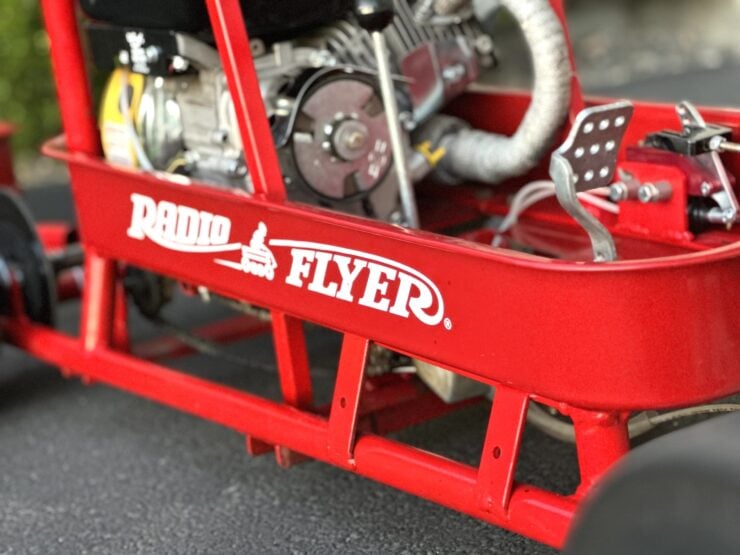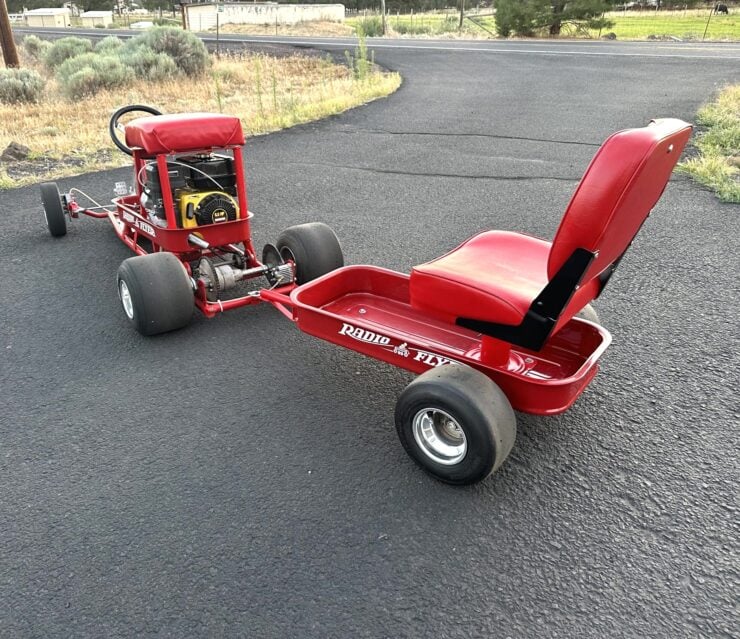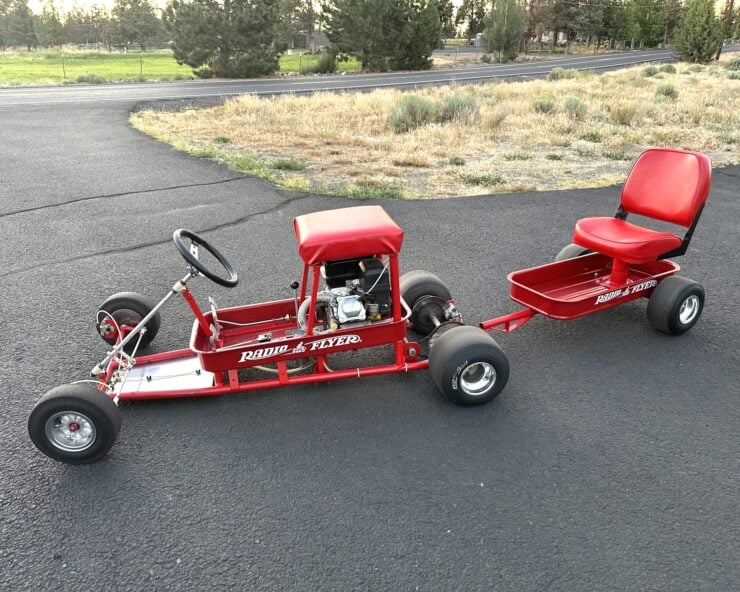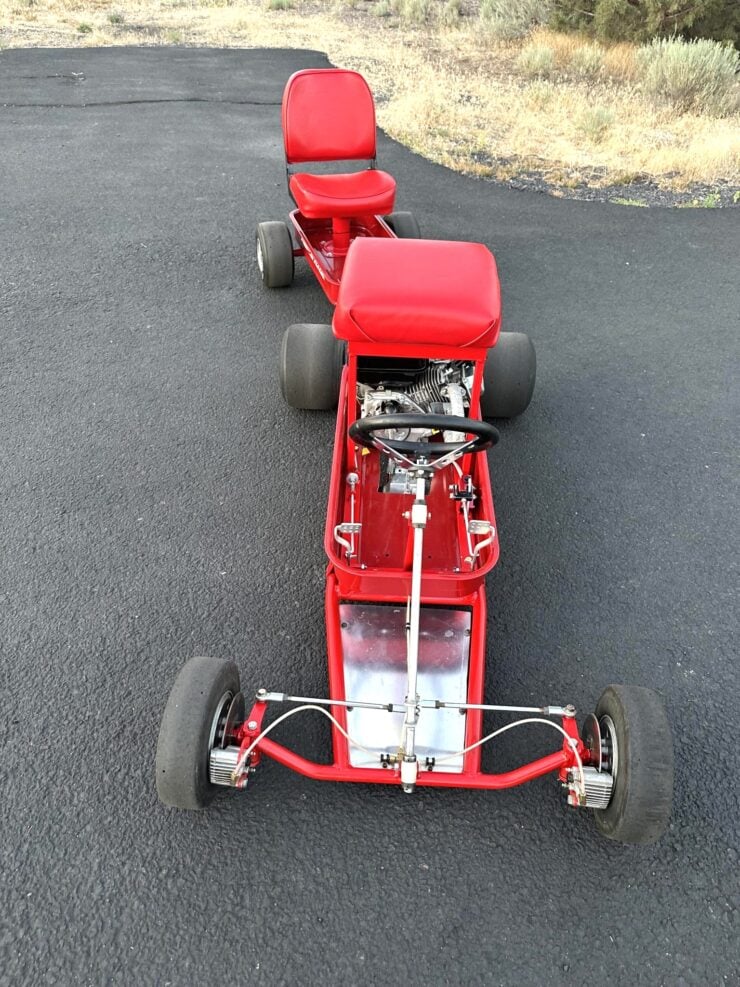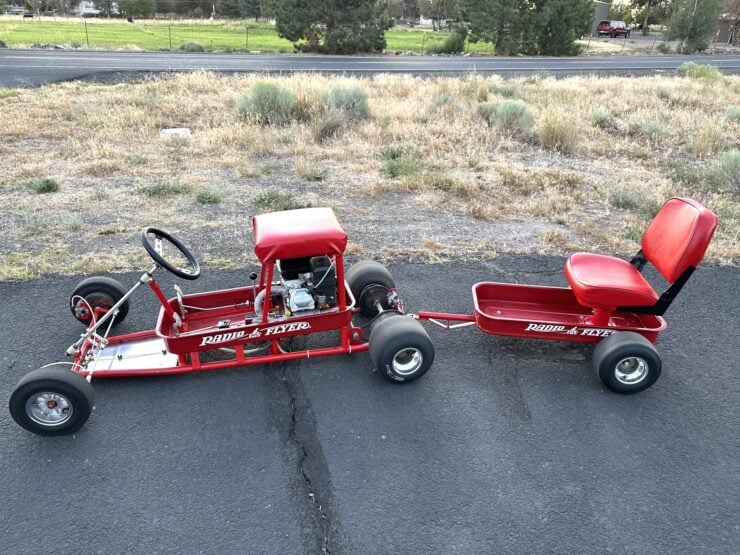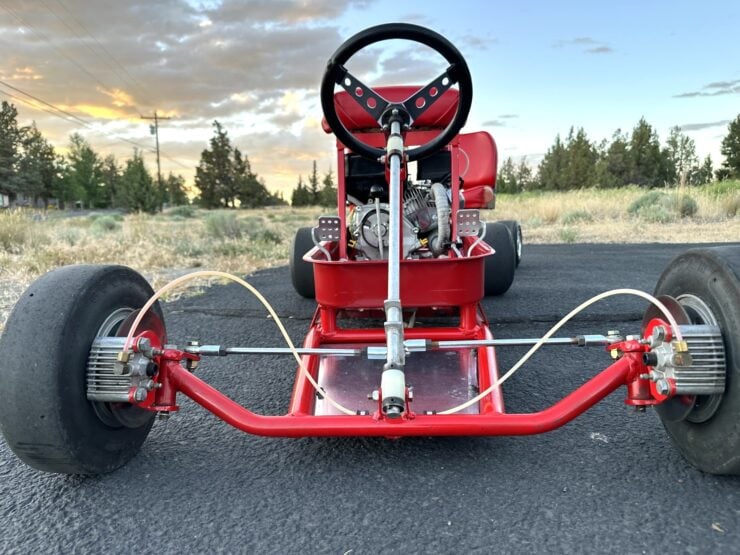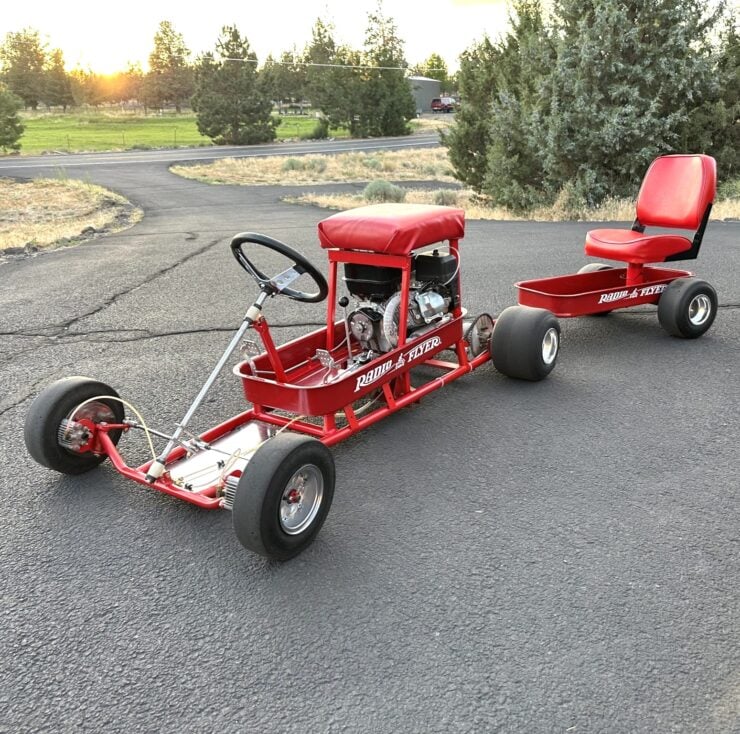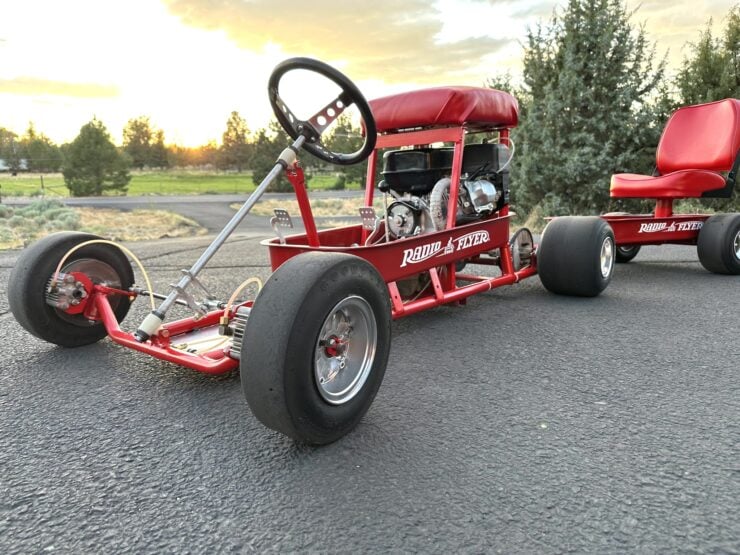This is a Radio Flyer wagon that’s been built into a go-kart, based on an Invader competition go-kart frame powered by a 6.5 bhp Champion single-cylinder engine. It also has a Radio Flyer trailer that is towed via a hitch and which can be removed if so desired.
Rather than a traditional go-kart seat, this unusual vehicle is fitted with a barstool offering a much higher ride height. It has a standard steering wheel and two pedals, and the trailer has a single office-type chair – both seats are upholstered in red vinyl.
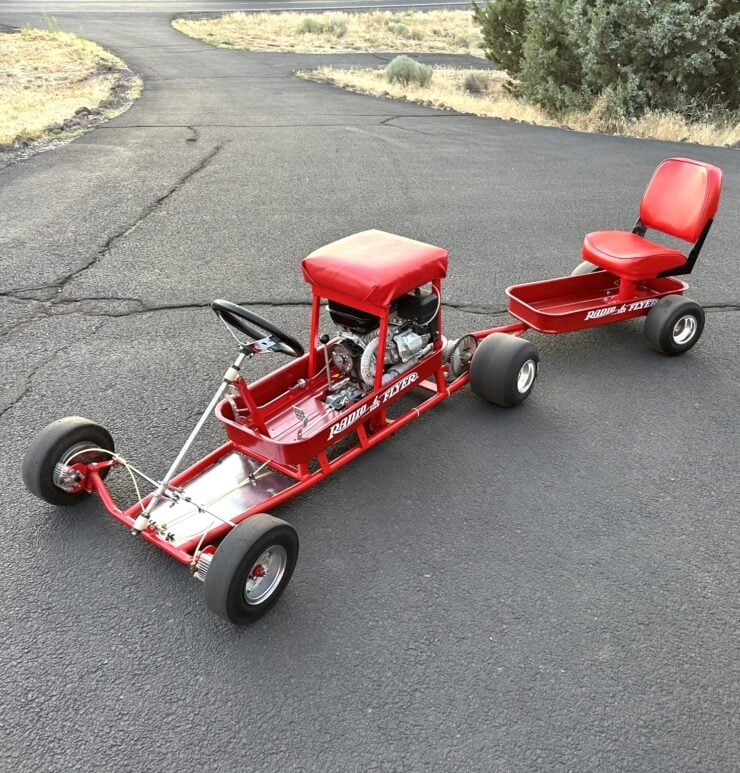

History Speedrun: Radio Flyer
In 1914, a 16 year-old Italian immigrant named Antonio Pasin arrived in Chicago, carrying little more than his woodworking skills and a dream. By 1917, he had saved enough to rent a small workshop, where he began building wooden wagons to transport the tools he needed for building his phonograph cabinets.
These wagons caught the attention of his customers who seemed more interested in them than the cabinets, leading Pasin to shift his focus entirely to wagon production. He named his first line the “Liberty Coaster,” inspired by the Statue of Liberty – perhaps the most famous symbol of his new homeland.
As demand for his wagons grew, Pasin sought out ways to increase production and reduce costs. In 1927, he adopted mass production techniques from the automotive industry, introducing stamped steel wagons. This innovation earned him the nickname “Little Ford” – high praise indeed.
He renamed his company Radio Steel & Manufacturing in 1930 and introduced the “Radio Flyer” wagon, combining his love for both radio technology and aviation, among the most important two innovations of the age.
The 1930s were challenging times due to the onset of the Great Depression, but Pasin’s wagons remained popular, selling for less than $3 each. During World War II, the company shifted to producing five-gallon steel gas cans for the U.S. Army, resuming wagon production in the post-war years.
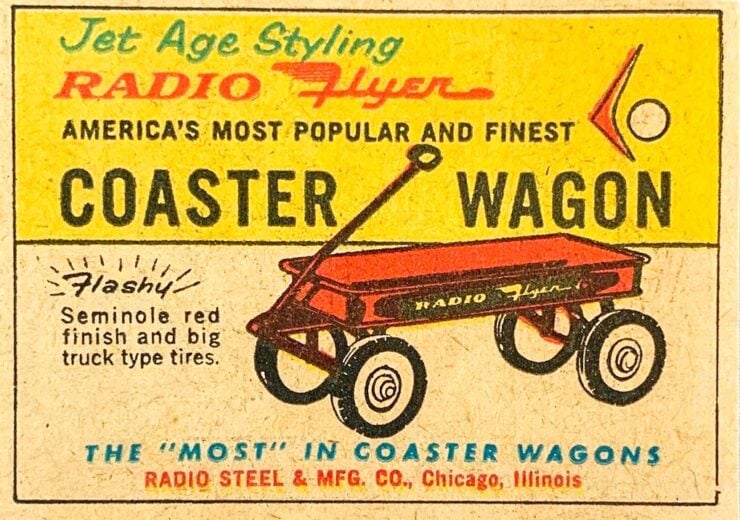


In the 1950s, the company introduced wagons with higher sides to accommodate children. The 1970s saw designs influenced by muscle cars, and in the 1990s, the company introduced the “Quad Shock Wagon” which was fitted with four Monroe shock absorbers to absorb bumps and shocks.
In 1987, the company was renamed Radio Flyer Inc. Today, under the leadership of Pasin’s grandson, Robert Pasin, Radio Flyer continues to offer a range of products from classic wagons to electric bikes, all while maintaining its commitment to its heritage.
The Radio Flyer wagon was inducted into the National Toy Hall of Fame in 1999 and it’s now remembered by many as one of the most famous wheeled-toys of the 20th century.
The Radio Flyer Go-Kart + Trailer Shown Here
This Radio Flyer go-kart and matching trailer is thought to have been custom built as a one-off in the 1990s. The kart is built on an Invader competition go-kart frame powered by a 6.5 bhp Champion single-cylinder, air-cooled engine that was installed in 2023 to replace the original unit.



The frame is made up of welded tubular steel, with an additional section added to support the fitment of the Radio Flyer wagon and the steel barstool-style seat. A rear tow bar has also been added, to allow it to tow the Radio Flyer wagon trailer.
This unusual two-part vehicle is now being offered for sale out of Terrebonne, Oregon on Bring a Trailer with a bill of sale. If you’d like to read more about it or register to bid you can visit the listing here.
Images courtesy of Bring a Trailer


